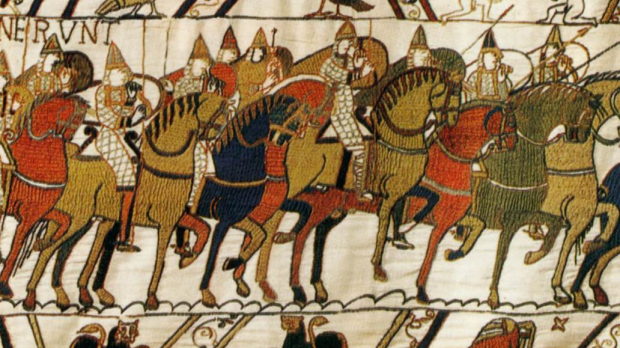Lenten Campaign 2025
This content is free of charge, as are all our articles.
Support us with a donation that is tax-deductible and enable us to continue to reach millions of readers.
Reputedly created by English nuns in the 11th century, the Bayeux Tapestry is 70 meters long and depicts William I’s conquest of England. It begins with events leading up to the Norman conquest and culminates in the Battle of Hastings, a decisive Norman victory.
Now, an agreement has been struck between France and England that will see the Bayeux Tapestry return to the UK in 2022. It is currently on permanent display at the museum in Bayeux in Normandy, but as the museum starts renovations, the tapestry will begin its UK tour.
English Culture Secretary Matt Hancock was thrilled by the announcement and told BBC:
“The Bayeux Tapestry is a world treasure and a symbol of the deep ties between Britain and France. We are incredibly excited about the potential of the loan, to enhance further the bonds that tie us to our neighbours across the water.”
The tour will also see the Latin text, sewn into the tapestry, translated into English.
The origins of the Bayeux Tapestry are uncertain. Some believe it was of French design, while others claim it to be produced by English nuns from all over England. In 2012, however, a researchers from the University of Manchester determined that the consistent needlework suggests it was produced by specialists in one place at the same time.
Previously, the tapestry was in the possession of Napoleon, who displayed it in Paris while planning an invasion of England. It was exhibited again in Paris during WWII before it was returned to Bayeux.
It is worth mentioning that many people believe that the tapestry is incomplete — that there should be a section on the end depicting William I’s coronation. In 2014, a group of embroiderers from Alderney, a small island off the coast of Normandy, worked for a year to recreate the last panels. They used the same techniques, fabrics, colors and similar types of wool to the medieval original, and the result is now on display beside the original.

